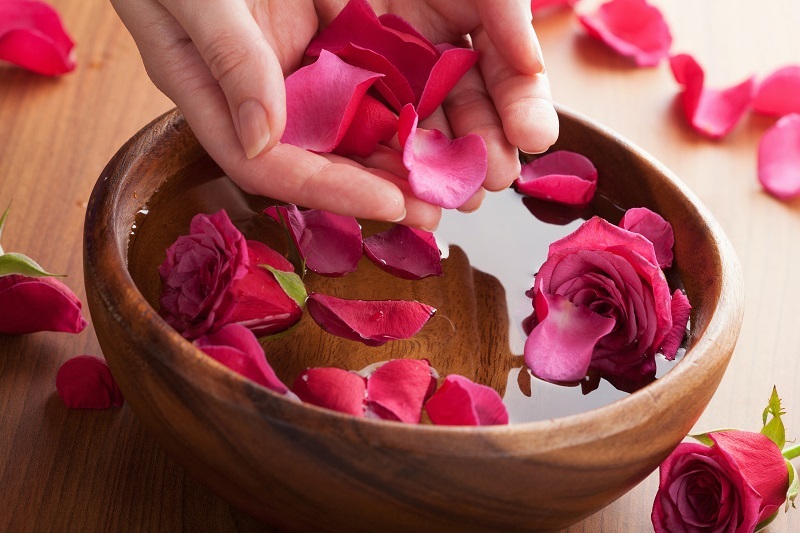Enhance the Longevity of Your Poinsettias
Posted on 03/07/2025
Enhance the Longevity of Your Poinsettias: The Ultimate Guide
The dazzling beauty of poinsettias lights up homes and offices every winter season, but too often, their vibrant red bracts wilt and shed far too soon. If you're wondering how to make poinsettias last longer, you're not alone. In this guide, you'll discover how to enhance the longevity of your poinsettias so they stay stunning for weeks--and even months--beyond the holidays.

Understanding Poinsettias: Not Just a Holiday Plant
Before diving into poinsettia care tips, it's important to understand this beloved plant. Known botanically as Euphorbia pulcherrima, poinsettias originated in Mexico and Central America and were introduced to the United States in the 19th century. They are not just for holiday decor; with proper poinsettia care, these plants can thrive year-round.
- Scientific Name: Euphorbia pulcherrima
- Common Name: Poinsettia
- Origin: Mexico, Central America
- Blooming Period: Late fall to winter (often around Christmas)
Why Do Poinsettias Fade Quickly?
Many believe that poinsettias are disposable and only last a few weeks. However, this misconception comes from improper care. The most common reasons poinsettias die early include:
- Incorrect watering -- Overwatering or underwatering
- Poor light conditions -- Too little or too much sunlight
- Drafts -- Exposure to cold or hot air
- Temperature extremes -- Placement near heaters or cold windows
- Lack of humidity -- Dry indoor air in winter
Comprehensive Poinsettia Care Tips for Prolonged Beauty
Enhancing the life of poinsettias starts from the moment you bring the plant home. Use the following strategies to maximize their vibrancy and keep them flourishing long after the festivities are over.
1. Choose Healthy Poinsettias
Long-lasting poinsettia care begins at the store. Selecting a healthy plant will give you the best start. Here's how:
- Look for deep green leaves with no yellowing or wilting.
- Check for intact bracts (colorful leaves) -- they should not be drooping or falling off.
- Inspect the center flowers (cyathia) -- avoid plants with dropped or dry central buds, as they've passed their peak bloom.
- Examine the soil -- it should be evenly moist, not soggy or dry and cracked.
- Avoid plants displayed near drafty doors or heating vents in the store.
2. Protect Your Poinsettia on the Way Home
Poinsettias are extremely sensitive to temperature changes, especially cold drafts. To help boost the longevity of your poinsettias:
- Wrap the plant in paper or plastic for the trip to shield it from cold air.
- Do not leave it in an unheated car, even for short periods.
- Once home, remove any sleeves or wraps promptly to prevent condensation and mold.
3. Optimal Placement for Lasting Blooms
Where you place your poinsettia plays a critical role in its vitality. To make your poinsettia last longer:
- Place in bright, indirect light. A north- or east-facing window is ideal.
- Keep away from cold drafts and direct heat sources, such as radiators, fireplaces, and entry doors.
- Maintain a temperature of 65-75?F (18-24?C) during the day and slightly cooler at night.
- Avoid fluctuating temperatures--poinsettias dislike rapid changes.
4. Watering Mastery: The Secret to Poinsettia Longevity
Watering is the most common reason poinsettias fail to thrive. Use these tips to keep the moisture just right:
- Check the soil daily. Water when the top inch of soil is dry to the touch.
- Water thoroughly until it drains from the bottom (remove decorative foil first), then empty saucers to prevent "wet feet."
- Avoid letting the plant sit in excess water, which can cause root rot.
- Never allow soil to dry out completely.
Pro Tip: Use lukewarm water to avoid shocking the roots.
5. Humidity Control: Keep Those Leaves Lush
Dry indoor air is the enemy of vibrant poinsettias. Here's how to prolong the color and health of your plant:
- Set poinsettias on a tray of pebbles and water, ensuring the pot is above water level for increased humidity.
- Avoid misting leaves, which can encourage fungus. Focus on ambient humidity.
- Group plants together to create a localized humid environment.
6. Feeding Your Poinsettia
Fertilizing poinsettias appropriately can extend their bloom period considerably:
- Do not fertilize while in bloom. Only begin feeding once the plant stops blooming, usually in late winter or spring.
- Use a balanced, all-purpose houseplant fertilizer (such as 20-20-20) every 2-4 weeks after blooming ends.
- Follow package directions to avoid over-fertilizing, which can damage roots.
7. Maintaining Post-Holiday Poinsettias
Wondering what to do with poinsettias after Christmas? With the right care, you can enjoy your plant for years:
- Continue regular watering until all bracts fall off in early spring.
- In March/April, cut back stems to 6 inches to encourage new, bushy growth.
- Repot in fresh soil in late spring if the plant looks root-bound.
- Place outdoors after the last frost (if possible), in partial shade.
- Begin fertilizing every 2-4 weeks from spring through early fall.
Reblooming Poinsettias: Encouraging Winter Color Next Year
Ambitious gardeners can make poinsettias rebloom for the following holiday season with a little effort:
- In early October, provide 14-16 hours of complete darkness each night (cover with a box or keep in a dark closet), and 8-10 hours of bright daylight each day for about 8-10 weeks.
- Keep temperatures between 60-70?F (15-21?C) during this period.
- This forced dark cycle encourages poinsettias to develop their colorful bracts again.
Common Poinsettia Problems and Solutions
Even with careful attention, you may encounter issues. Here are common poinsettia issues and their fixes:
- Leaf Drop -- Usually caused by drafts or sudden temperature changes. Move to a stable environment away from vents and doors.
- Wilting/Falling Blooms -- Often due to inconsistent watering. Establish a watering routine based on soil dryness, not a calendar.
- Yellowing Leaves -- Indicates overwatering or undernutrition. Let soil dry between waterings and fertilize when appropriate.
- White Fuzzy Patches or Spots -- Most likely powdery mildew or pests. Remove affected leaves and treat with appropriate fungicide or insecticide.
Frequently Asked Questions About Poinsettia Longevity
Are Poinsettias Poisonous?
Poinsettias have a mild toxicity to pets and people, but are not as dangerous as once believed. Eating large amounts can cause mild stomach upset. Always keep them out of reach of children and pets.
Can Poinsettias Stay Alive Year-Round?
Absolutely! With continued care, most poinsettias can survive for several years and even produce colorful bracts annually with the right light cycle.
Should You Put Poinsettias Outside?
You can move poinsettias outdoors in late spring and summer, once overnight temperatures stay above 55?F (13?C). Bring them inside before the first frost for continued success.
How Long Can Poinsettias Live?
With attentive care, poinsettias can live for many years. The typical life span in the average home is several months, but enthusiasts have kept plants growing--and reblooming--for a decade or more!

Summary: How to Boost the Lifespan of Your Poinsettias
To make your poinsettias last longer and enjoy their festive color well into the new year, remember:
- Select a healthy plant from the start
- Keep away from drafts, heat, and temperature extremes
- Water only when soil is dry
- Enhance humidity without wetting leaves
- Fertilize after bloom period
- Follow simple steps for reblooming
Conclusion: Enjoy Your Poinsettia All Year Round
By following these expert tips on how to enhance the longevity of your poinsettias, you can turn this seasonal plant into a long-term companion. Whether for holiday decor or as a year-round houseplant, proper care will ensure your poinsettia remains a vibrant and welcoming addition to your home. Take these easy steps to maximize the lifespan of your poinsettia plant and enjoy lush, colorful bracts season after season!





